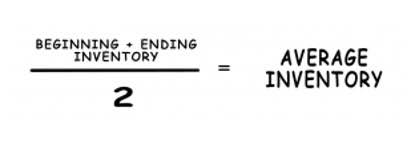
Regular reviews, such as monthly reconciliations, help identify discrepancies and ensure compliance with financial policies, such as preventing duplicate payments, missed payments, or overpayments. Join our community to get finance, operations, and procurement resources straight to your inbox. Goods and services can be requisitioned from the same suppliers across all departments, cleaning up your supply chain and greatly https://www.bookstime.com/articles/what-is-a-master-budget reducing errors. To properly manage either payable category, granular spend visibility is essential.
A company incurs a bill for internet and phone services, payable in 30 days, with no formal loan or interest involved.

Accounts payable (AP) refers to a company’s short-term obligations to suppliers and vendors for goods and services received on credit. Instead of paying immediately, businesses receive invoices and are expected to settle them within a specific period (usually 30 to 90 days). Effectively managing accounts and notes payable ensures a business’s financial health and operational efficiency. While accounts payable focus on short-term obligations for routine operations, notes payable facilitate more significant, long-term investments and structured borrowing. Both liabilities are integral to maintaining liquidity, building strong relationships with suppliers and creditors, and supporting sustainable growth.
Download our guide “Preparing Your AP Department For The Future”
- Other long-term debt includes broader financial obligations like bonds or mortgages, which may have different structures, terms, and repayment mechanisms.
- If you have a good relationship with the vendor or supplier, they may be willing to accommodate a late payment without penalty.
- She has held multiple finance and banking classes for business schools and communities.
- Debiting the notes payable account, the interest account, and the cash account is used to make the payment.
- Let’s now look at the head-to-head differences between Accounts Payable vs. Notes Payable.
- With a solid grasp of accounts payable meaning, a company can avoid late payment penalties, strengthen supplier relationships, and improve cash flow management.
This is money owed for goods or services bought on credit, due to suppliers usually within a year. Explore the latest best-in-class add-on technology from Sage with our new webinar series. Discover seamless ways to automate processes, business insights to support growth at scale, and strategies to help you build a winning partnership with your leadership team. The company must have paid back the initial principal plus the specified interest rate by the note’s maturity date.

Order to Cash Solution

Strong procure-to-pay (P2P) management helps companies keep a rein on spending and creates an audit trail and a business case for every purchase. Procurement software can build these guardrails into the ordering process so your stakeholders Online Accounting can get what they need without overspending. Excessive long-term debt can also inhibit company growth since the increased debt makes it more difficult to obtain additional loans or make additional outside investments.
Accounts Payable vs Notes Payable: How They Compare
At their core, accounts payable and notes payable are obligations a business owes to external parties. They signify debts incurred due to transactions or borrowings, and their effective management is crucial for maintaining a healthy financial position. The formal and transparent nature of notes payable encourages businesses to maintain accurate records, monitor repayment schedules, and uphold financial discipline.
Automated Debt Collection
- In bigger companies, handling notes payable involves more than just repayment.
- On the other hand, notes payable refers to a written promise to repay a lender a specific amount by a certain date.
- Notes payable refers to a formal, written agreement in which your business borrows money from a lender and commits to repaying it later, usually with interest.
- If a business takes on so much debt that it can’t issue payments on time, its relationships with suppliers and lenders may be at risk.
- They also keep an eye on working capital to pay on time without affecting the company’s liquidity.
- Both accounts payable and notes payable are presented as liabilities on a company’s balance sheet.
Imagine a retail clothing store purchasing $20,000 worth of inventory from a supplier on credit, with a 60-day payment term. Many businesses operate across several sites and via separate departments that replicate similar activities. It is common for the same goods and services to be needed by these separate departments and sites. Without an established P2P process, each location may end up generating its own supply chain, which often leads to frequent errors. Accounts payable (AP) and notes payable (NP) are often used interchangeably, but in reality, they operate differently and serve distinct purposes within your financial strategy. This long-term obligation can result in a highly notes payable vs accounts payable leveraged company that may run into cash flow problems.

AP & INVOICE PROCESSING
In contrast, the latter is the written promise to give a specific sum of money at a specified future date or per the demand of the holder who received the note. However, companies and lenders are free to agree to a longer maturity period. Rather than creating a formal contract to cover the debt, both parties typically just come to a verbal agreement. Debts marked under accounts payable must be repaid within a given time period, usually under a year, to avoid default. The items purchased and booked under accounts payable are typically those that are needed regularly to fulfill normal business operations, such as inventory and utilities. When you procure needed supplies using financing and ensure an effective budgetary process through P2P, you immediately see higher cash flow stability and lower costs.
Main Differences Between Notes Payable and Accounts Payable
For your accounts payable, review the payment terms as outlined by the vendor. This will set the deadline for when the payment is due as well as any extra costs if you miss the payment. Interest will only accrue on an accounts payable balance if a payment is late. When the supplier delivers the goods it also issues a sales invoice stating the amount and the credit terms such as Due in 30 days. After matching the supplier’s invoice with its purchase order and receiving records, the company will record the amount owed in Accounts Payable.
